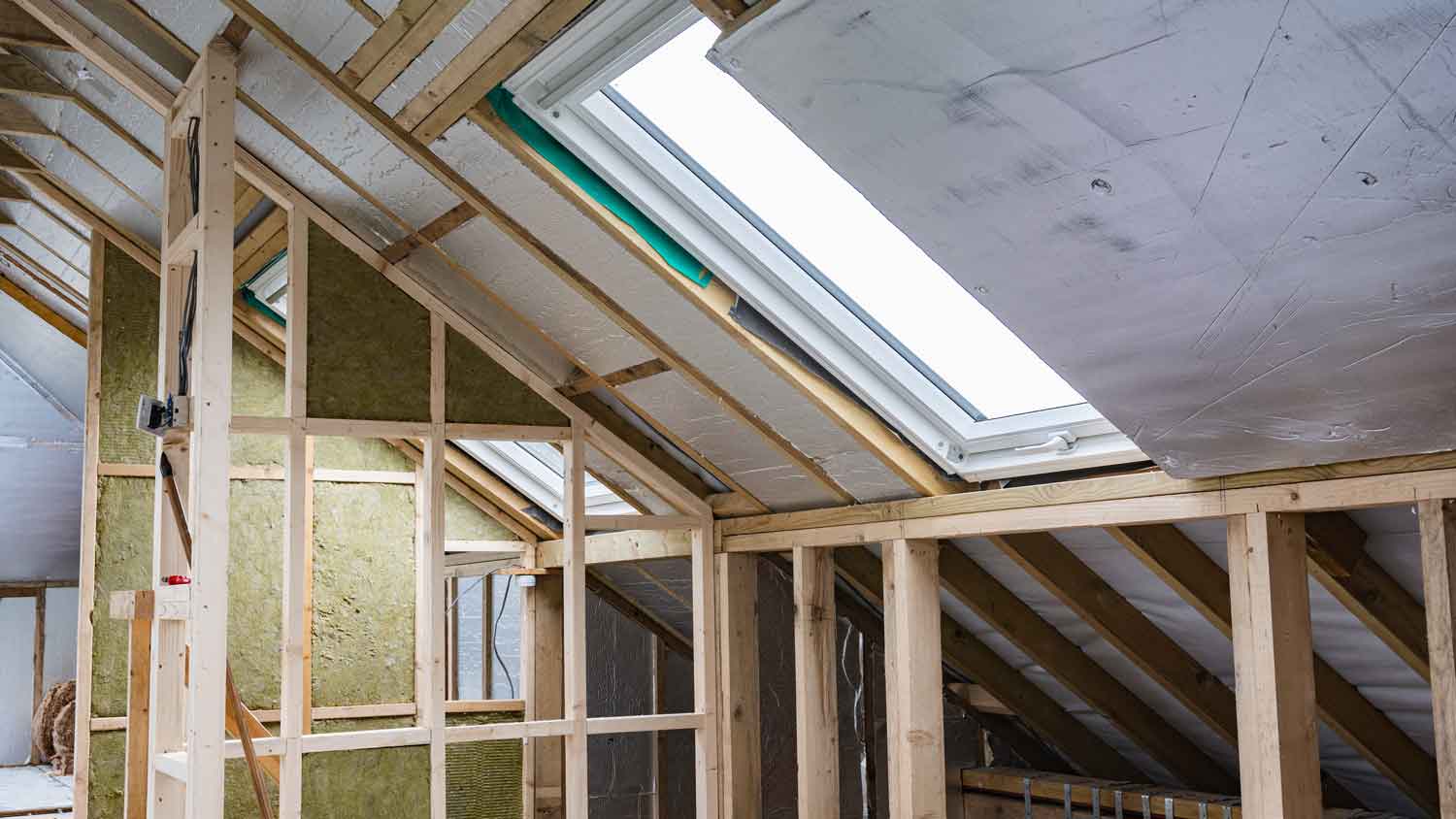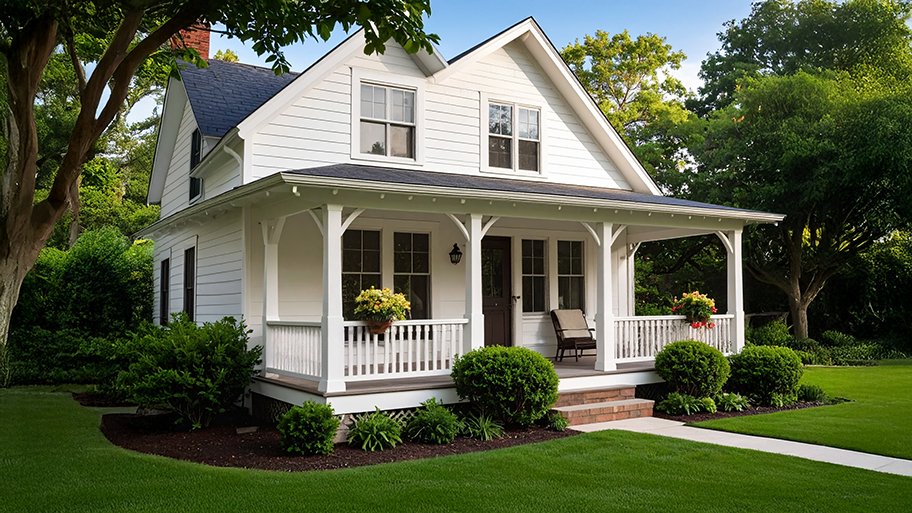
Discover the cost to remove asbestos siding, including average prices, key cost factors, and tips to help homeowners plan a safe and budget-friendly project.
The average asbestos removal cost is $2,500 in Washington, D.C., but prices range from $1,533 to $3,536 based on your pro’s removal process.


The amount of asbestos material, the type of asbestos, and its accessibility will affect the cost of removing it from your D.C. home.
The average home in Washington, D.C., was built in 1983, after the dangers of asbestos were well known, so its presence is less common.
Encapsulating asbestos is legal in Washington, D.C., which is a more affordable but less permanent solution.
The asbestos regulations in Washington, D.C., don’t apply to single-family residences, but following the recommended guidelines is best for safety.
Asbestos removal costs in Washington, D.C., average $2,500, and most projects cost between $1,533 and $3,536. This is more than you’d pay in most other cities, in large part because the cost of living in Washington, D.C., is 43% higher than the national average. Let’s review the cost factors to consider when planning an asbestos removal project in the nation’s capital.
Asbestos removal costs in Washington, D.C., depend mostly on the amount of material you need your professional to remove, but factors like accessibility to the demolition area, the type of asbestos, and distance to an approved dump site can also affect your pricing.
An indoor asbestos remediation project costs between $7 and $29 per square foot, depending on the location of the asbestos in your home. The bigger the space, the more you'll pay. Removing asbestos from exterior locations, like a roof or siding, costs $71 to $215 per square foot. Whole-home remediation can cost $8,150 or more, but since most homes in D.C. were built after asbestos use was on the decline, major projects are uncommon.
You can look for signs of asbestos to determine if the material is a concern in your home, but you’ll need an asbestos inspection and testing to confirm. Use the table below to estimate project costs based on the volume of material.
| Square Footage of Affected Area | Cost to Remove |
|---|---|
| 10 | $70–$290 |
| 25 | $175–$725 |
| 50 | $350–$1,450 |
| 100 | $700–$2,900 |
| 150 | $1,050–$4,350 |
| 200 | $1,400–$5,800 |
| 300 | $2,100–$8,700 |
| 400 | $2,800–$11,600 |
The removal process is similar for all types and colors of asbestos, but some fibers are smaller than others, requiring greater attention to detail during setup and removal. There are six common asbestos types, and you’ll need an asbestos test to determine which you have in your home.
Most will require similar preparation and removal procedures, but amosite and crocidolite often require additional prep work and safety precautions, which increases your total labor costs.
| Type of Asbestos | Average Removal Cost |
|---|---|
| Actinolite | $2,500 |
| Amosite | $2,750 |
| Anthophyllite | $2,500 |
| Chrysotile | $2,500 |
| Crocidolite | $2,625 |
| Tremolite | $2,500 |

It costs less to remove asbestos from accessible locations because less labor is required to seal and prepare the work area. For example, to remove asbestos from a floor pipe spanning three rooms, your expert would need to seal each room and install containment fans in each before carrying out the demolition. If a pipe of similar length is in an exposed basement, your pro only needs to seal a single area, and they may not need any demolition work to reveal the material.
Exterior asbestos materials, like siding and roofing, are an exception because sealing the entire home to contain fibers isn’t realistic. Instead, your pro will use additional caution to avoid breaking asbestos-containing materials, including transporting roofing shingles or siding to a dumpster by hand.
| Material Location | Cost per Square Foot |
|---|---|
| Attic insulation | $16–$36 |
| Basement | $7–$29 |
| Flooring | $7–$22 |
| HVAC ducts | $50–$79 |
| Pipe insulation | $7–$22 |
| Popcorn ceilings | $13–$29 |
| Roof and shingles | $71–$172 |
| Siding | $4–$22 |
| Walls/drywall | $11–$20 |
The average cost of hauling away asbestos debris in Washington, D.C., is between $110 and $360, but that doesn’t include packaging or labeling, which your dump site might require.
There are district-wide requirements for disposing of asbestos-containing materials from commercial buildings, public buildings, and residences with five or more living units, but single-family residences and homes with four or fewer units are exempt.
However, most approved disposal sites will only accept asbestos materials that are packed and labeled properly. Actual disposal fees may not vary much, but your labor costs to accommodate those requirements can.
You can expect labor to account for between 80% and 95% of your total when you hire an asbestos removal company in Washington, D.C., costing between $2,000 and $2,400, on average.
Professionals who are certified to remove asbestos will go above and beyond to keep your household and the surrounding area safe from harm by following the more stringent regulations that apply to removing asbestos from commercial and public buildings in D.C.
Washington, D.C., charges a minimum permit fee of $641 for removing asbestos from commercial and public buildings. While there’s no specific asbestos permit fee for most residential buildings, you will still have to pay the general construction permit fees, which include a $30 base fee plus a fee equal to 2% of the project total. Given the cost of asbestos removal in D.C., your permit fee will average $83.
Leave asbestos removal to the professionals. Long periods of exposure to a high volume of disturbed asbestos can have harmful effects on your health, including serious diseases like asbestosis, mesothelioma, and lung cancer.
Removing asbestos from your home won’t increase the value, but without eradicating the problem, your home will likely have a difficult time on the real estate market. You’re required to disclose known asbestos problems to buyers in Washington, D.C., raising concerns of safety risks and significant repair investments.
More importantly, removing asbestos that has become friable drastically improves safety for yourself and your family. Asbestos exposure can cause cancer and damage to your respiratory tract, so removal is worth it, even barring the potential financial upside.
Home is the most important place on earth, which is why Angi has helped more than 150 million homeowners transform their houses into homes they adore. To help homeowners with their next project, Angi provides readers with the most accurate cost data and upholds strict editorial standards. We survey real Angi customers about their project costs to develop the pricing data you see, so you can make the best decisions for you and your home. We pair this data with research from reputable sources, including the U.S. Bureau of Labor Statistics, academic journals, market studies, and interviews with industry experts—all to ensure our prices reflect real-world projects.
Want to help us improve our cost data? Send us a recent project quote to [email protected]. Quotes and personal information will not be shared publicly.
From average costs to expert advice, get all the answers you need to get your job done.

Discover the cost to remove asbestos siding, including average prices, key cost factors, and tips to help homeowners plan a safe and budget-friendly project.

The cost of asbestos testing varies based on location, property size, test type, and other factors. Here’s a breakdown of the costs to conduct an asbestos survey.

Get clear answers on asbestos tile removal cost, including average prices, cost factors, and tips to save money on safe, professional removal.

Several types of asbestos exist, each of them dangerous for human health. Learn more about each type and where you might find them.

There are ways to cover asbestos siding that make it safer, but it is always going to be safest to have a professional company perform the required tests and remove it.

The significant risk of asbestos in homes must be attended to, which means knowing who to call for asbestos removal. Here's how to hire the best professional.